Get PeakVisor App
Sign In
Search by GPS coordinates
- Latitude
- ° ' ''
- Longitude
- ° ' ''
- Units of Length

Yes
Cancel
Share ×

Scan the QR code and open PeakVisor on your phone
❤ Wishlist ×
Choose
Delete
Discover the birthplace of modern British tourism with a trip to the Wye Valley AONB, which is nestled along the border of England and Wales in the United Kingdom. There are 46 named summits in Wye Valley AONB. Beacon Hill (311 m/1,020 ft) is the highest point in the AONB. The most prominent hill in Wye Valley is Coppet Hill (211 m/692 ft).
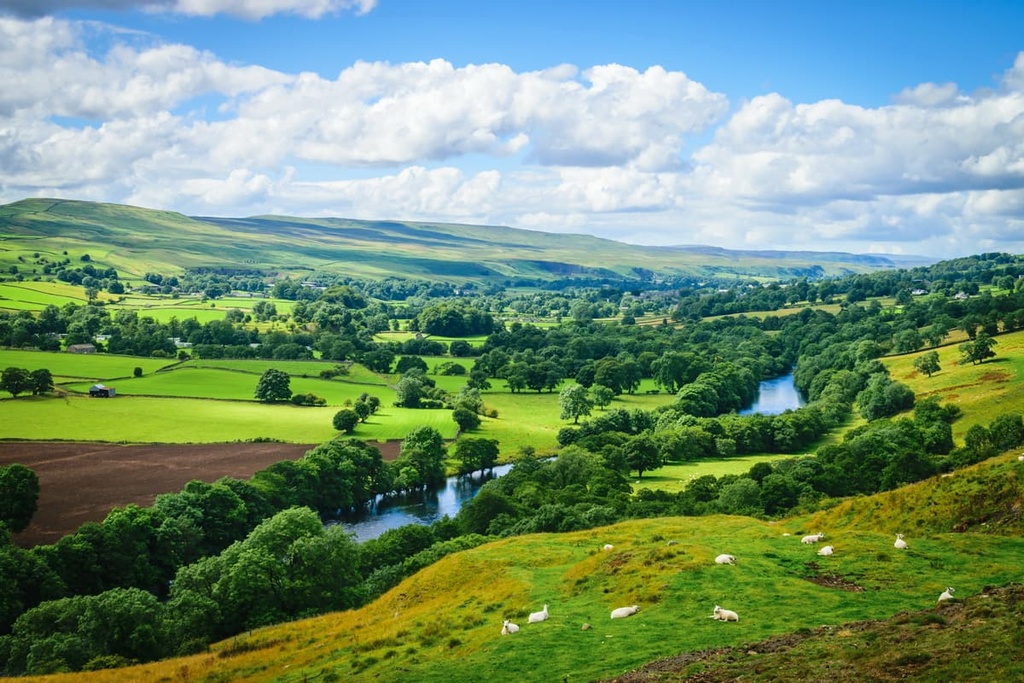
The Wye Valley AONB is an area of protected countryside along the England-Wales border, within the counties of Gloucestershire, Herefordshire, and Monmouthshire.
It covers an area of approximately 126 sq. mi (326 sq. km) and is the only cross-border Protected Landscape in the United Kingdom. The Wye Valley AONB is also one of 42 AONBs in England, Wales, and Northern Ireland.
The Wye Valley AONB centers around the Lower River Wye and its surrounding valley and hills. The River Wye is the fifth-longest river in the United Kingdom, at approximately 155 mi (250 km) in length.
The landscape of the Wye Valley gets more dramatic as you move from north to south, with the meadows and lowlands of Herefordshire to the north giving way to wooded slopes, bluffs, and gorges to the south.
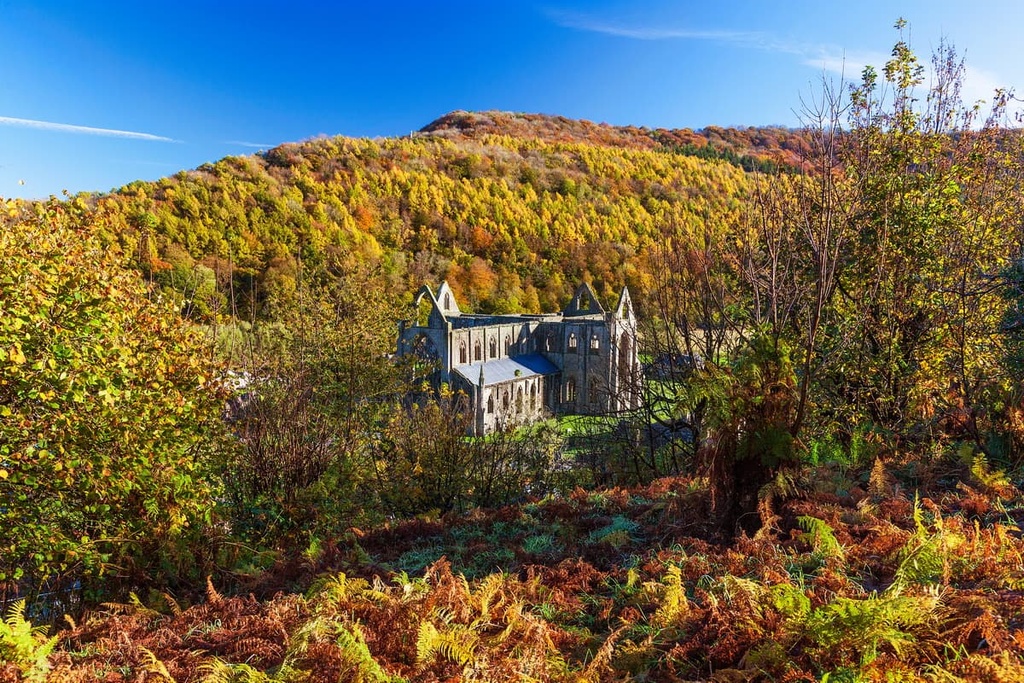
Most of the Wye Valley's landscape is coated in dense woodlands that are native to the region. In fact, the Wye Valley AONB is home to one of the largest remaining sections of ancient broad-leaved forests in the country.
The most significant forest within the Wye Valley AONB is the Forest of Dean, an ancient woodland that covers an area of 42 sq mi (110 sq km) across the western half of Gloucestershire.
There are two gorges in the AONB, the Lower Wye Gorge and the Upper Wye Gorge.
The Lower Wye Gorge lies on the park's southern boundary and includes the Ban-y-Gor and Lancaut nature reserves. The Upper Wye Gorge is located near Symonds Yat at the center of the AONB. Both gorges are Sites of Special Scientific Interest (SSSI) as they are essential to local conservation efforts.
While there are no large cities within the Wye Valley AONB, there are several significant market towns and border communities. Notable towns include Chepstow, Ross-on-Wye, and Monmouth. The nearest city is Hereford, which is located approximately 5 mi (8 km) to the northwest of the AONB.
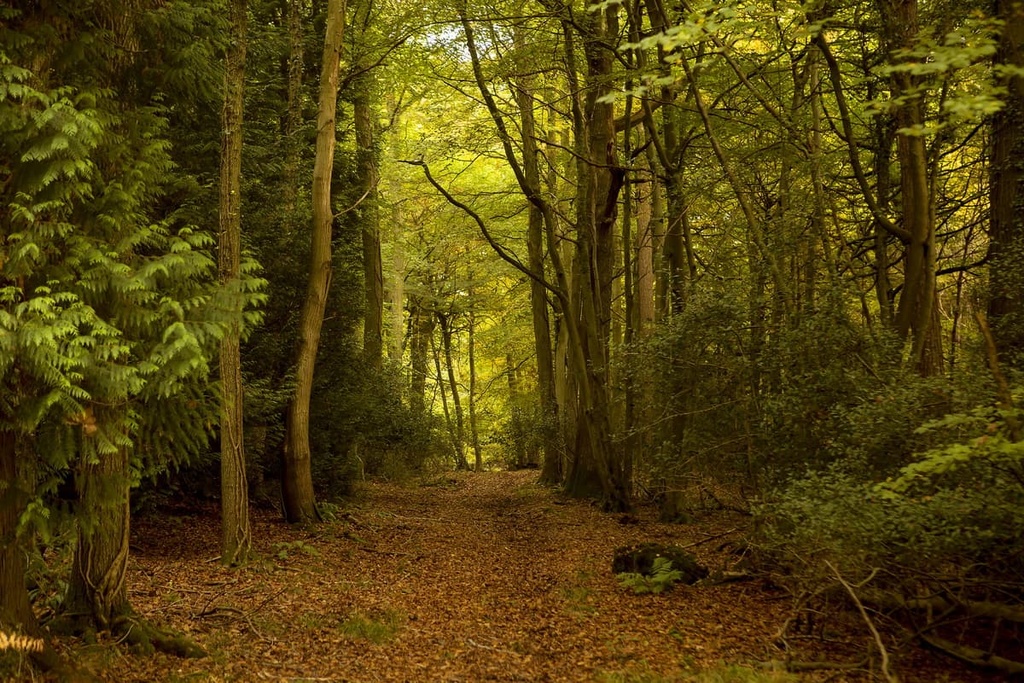
The geology of the Wye Valley is varied and features a complete sequence of the Carboniferous Limestone Series.
Beneath most of the AONB is a base of Old Red sandstone and mudstones, which formed during the Devonian Period (419 to 359 million years ago). During this period, old rock sediment was deposited by rivers across tropical coastal plains, forming the park’s base. The northern part of the AONB around Woolhope Dome is composed primarily of Silurian limestones, sandstones, and shales.
The Wye Valley's limestones are softer than they are in other areas of Britain, allowing the River Wye to snake across the landscape and create a wider floodplain. The AONB's sandstone and limestone landscapes meet near Symonds Yat, creating a varied landscape of gently rolling hills, plains, and river cliffs.
To the south of Symonds Yat, much of the Lower Wye Valley was formed by the River Wye as it cut through rock layers that dip towards the Forest of Dean. This erosion has created river gorges with steep cliffs, especially where the river has carved through the region's Old Red Sandstone.
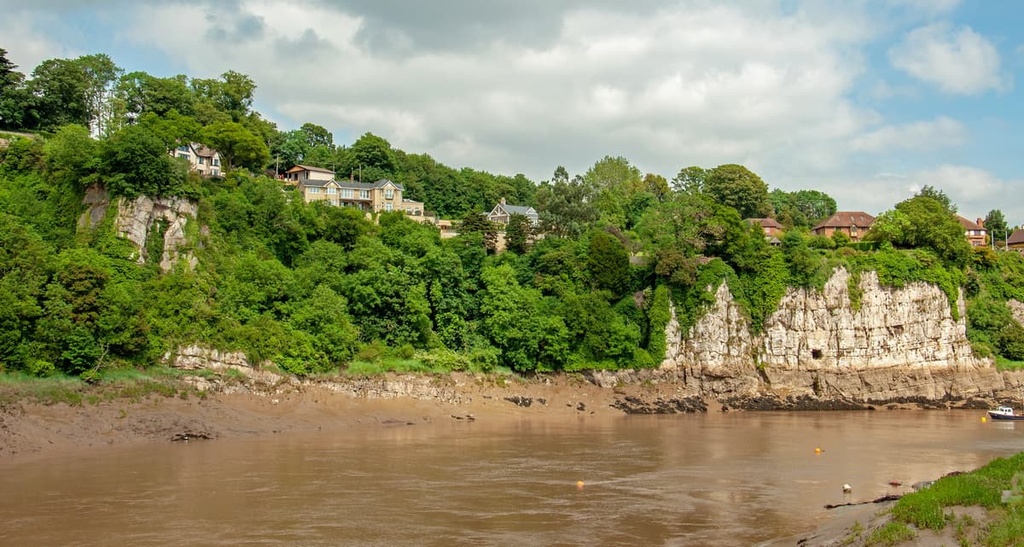
Underground waterways have formed many caves across the Wye Valley. Many of these caves can be found around the Forest of Dean, including King Arthur's Cave. The longest cave system in the Forest of Dean is the Slaughter Stream Cave, which is approximately 8.1 mi (13 km) in length and 100 m (328 ft) deep.
The hills of the Wye Valley are gentle and Beacon Hill (311 m/1,020 ft) is the only hill in the AONB to exceed 300 m (984 ft) in elevation. The AONB is home to one Marilyn (a hill or mountain that exceeds 150 m/492 ft in prominence), Coppet Hill (211 m/692 ft), which has a prominence of 151 m (495 ft).
Other notable hills in the Wye Valley include Buck Stone (278 m/912 ft), Little Doward (227 m/745 ft), and Craig-y-Dorth (243 m/797 ft).
Home to several nature reserves and SSSIs, the Wye Valley is recognized as a vital habitat for various flora and fauna. In addition, the Wye Valley is being used to reintroduce some animals, such as beavers, back in the UK after being extinct for hundreds of years.
The largest mammals within the Wye Valley are deer. Meanwhile dormice rank among the AONB's smallest inhabitants. The River Wye is a crucial habitat for several species of water-loving mammals, including otters and water voles. Water voles rank as one of the fastest declining mammals in the UK.
The River Wye leads to the Severn Estuary, meaning the occasional large sea-dwelling mammal will find its way to the Wye Valley. Dolphins have been spotted near Chepstow, and an adult gray seal called Keith resided at Symonds Yat in 2014.
Roughly 30 fish species inhabit the River Wye. The river is home to three species of lamprey, as well as internationally important populations of twaite shad, salmon, and bullhead.
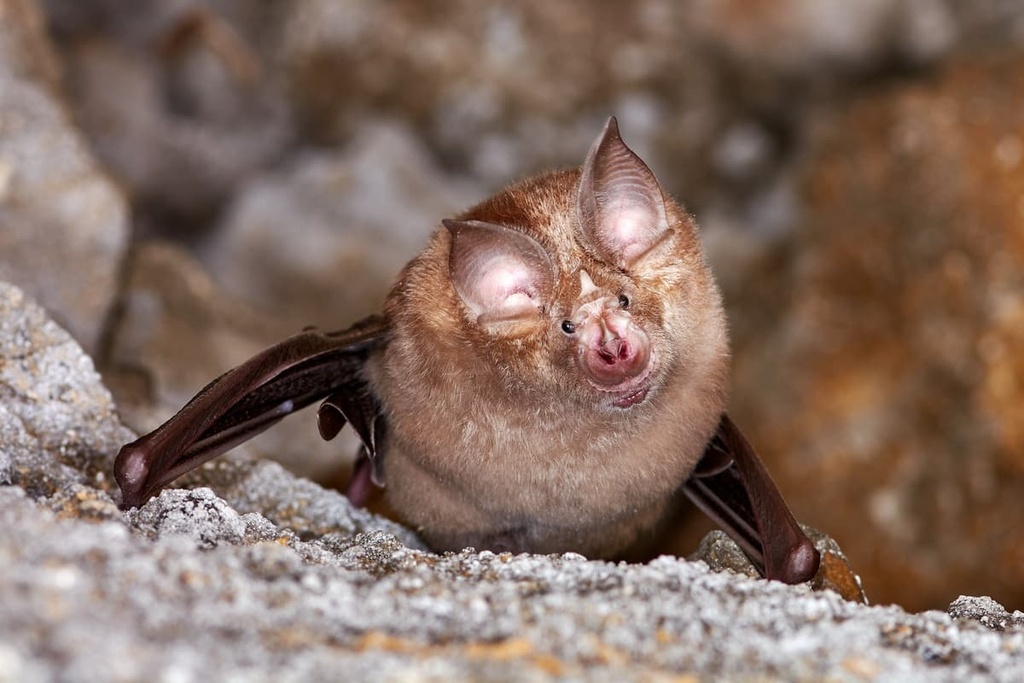
Lesser horseshoe bats thrive within the Wye Valley. In 2006, one colony of lesser horseshoe bats had reached record figures, with approximately 890 adult bats living in a small barn.
Birds are the most common fauna in the Wye Valley AONB. Riverside bird species are prevalent, including mute swans, gray herons, and dippers. Kingfishers are one of the most vibrant bird species you'll see along the River Wye. Other bird species include nightjars, ravens, and goshawks.
Aside from the Forest of Dean, other notable woodlands include Cadora Woods, Coppice Mawr Wood, and Little Doward Woods. Most woodlands in the Wye Valley AONB consist of beeches, oaks, sweet chestnuts, and hawthorns. Douglas firs, which were introduced from Canada, are also present in the region.

The different soils within the limestone and sandstone areas of the Wye Valley mean an array of plants can thrive in the AONB. During the winter, wood anemones, primroses, and violets are common. In the spring, wild daffodils and wild garlic can be found in forested areas.
One of the best natural sights in the Wye Valley is when bluebells carpet the area’s forests and hills, including Coppet Hill (211 m/692 ft). This bluebell blossom is considered one of the finest of its kind in the world.
The summer brings a number of vibrant wildflowers. One of the highlights is the foxglove, a pink and purple tubular flower that grows throughout the Forest of Dean in June. The flower is known locally as snompers, but is known by many names, including dead man's bells, fairy's caps, and throatwort.
Prehistoric humans lived in the Wye Valley over 12,000 years ago. Additionally, archeologists have uncovered evidence of Paleolithic and Neolithic settlements near Symonds Yat and Chepstow.
There are a number of Bronze Age and Iron Age archeological sites dotted across the Wye Valley. The standing stones found in the southern part of the park date back to the Bronze Age. There are the remains of several Iron Age fortified settlements atop the area's hills.

During the Roman conquest of Britain, many towns were built, including Ariconium near modern-day Ross-on-Wye and Blestium, which is now Monmouth. These settlements were located on Watling Street, an 276 mi (444 km) long ancient Roman road that spanned from Dover in Kent to Wroxeter in Shropshire.
One of the most prominent human-made features of the Wye Valley is Offa's Dyke. Offa's Dyke was built in the eighth century under King Offa of Mercia to form a boundary between the ancient kingdoms of Mercia and Powys. Today, Offa's Dyke is the longest archeological feature in Britain.
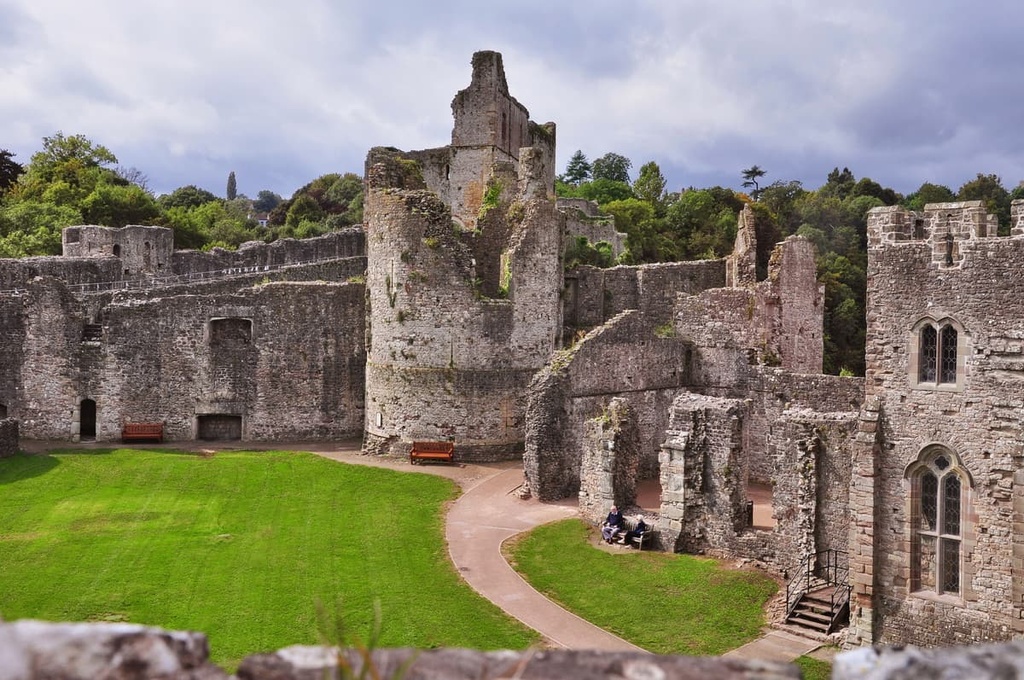
Throughout history, the Wye Valley has been at the forefront of industry and culture. The Wye Valley was one of the first parts of Britain to industrialize. By the sixteenth century, several significant enterprises were established in the area. Notable examples include large wire works at Tintern in Wales which employed several hundred people, as well as a metalworks along the River Wye.
Many historians consider the Wye Valley to be the birthplace of modern tourism. Reverend John Egerton began arranging private two-day boat trips down the River Wye from Ross in the mid-eighteenth century.
News of the beauty of the Wye Valley spread via word of mouth, and the general public started inquiring about boat tours in the area by the mid 1700s.
By the late 1700s, writers and artists from across Britain were taking the Wye Tour to admire the local landscape, culture, and industry. The Wye Tour is one of the first examples of people vacationing purely to enjoy an area's scenery.
Today, the Wye Valley AONB is still hugely popular, attracting over 2.3 million tourists annually. The Wye Valley was established as an Area of Outstanding Natural Beauty in 1971.
There are over 559 mi (900 km) of trails to explore in the Wye Valley AONB that weave across picturesque clifftops and through ancient forests. Here are a few of the best hiking areas in the Wye Valley AONB.
Coppet Hill (211 m/692 ft), or Coppett Hill, is the most prominent hill in the AONB. It provides one of the best viewpoints in the Lower Wye Valley. The hill and the surrounding 242 acres (98 hectares) form the largest nature reserve in Hertfordshire.
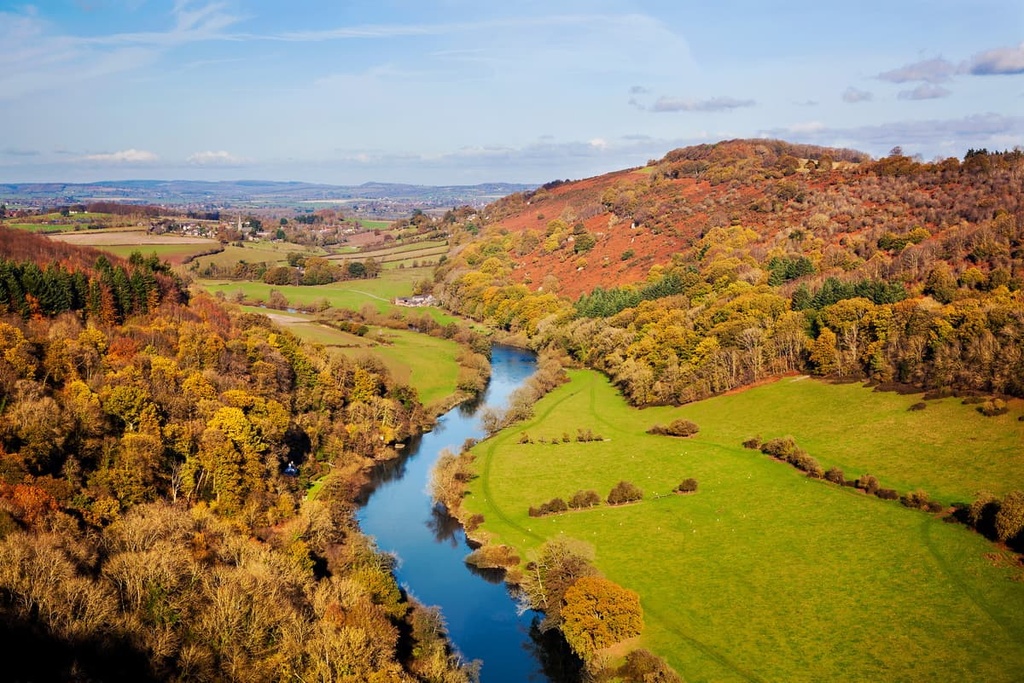
Coppet Hill is located approximately 4 mi (6.5 km) to the south of the village of Goodrich. Nature watchers flock to Coppet Hill in the spring as it's one of the best spots to see carpets of bluebells. The woodlands surrounding the hill are also beautiful in autumn.
Several hiking trails lead up Coppet Hill. Hikers looking for a day-long walk should follow the 8 mi (13 km) walk from Goodrich Castle. There's also a shorter circular walk that takes in the best of Welsh Bicknor and Coppet Hill. This 3 mi (5 km) walk starts from the lay-by halfway up Coppet Hill.
From the folly atop Coppet Hill, hikers will be able to enjoy sweeping views of England and Wales. Hikers can even catch a glimpse of the Black Mountains in Brecon Beacons National Park to the west and the Malvern Hills to the northeast on a clear day.
Symonds Yat is one of the most popular villages and hiking destinations in the Wye Valley AONB. The village straddles the River Wye and is located close to Symonds Yat Rock, a clifftop that offers one of the best panoramas of the Upper Wye Gorge.
Symonds Yat Rock is a popular starting point for many walks in the Wye Valley, as it features a car park complete with a well-stocked cafe. The cliffs near Symonds Yat Rock are popular with birdwatchers, as goshawks, hobbies, and ospreys are often seen in the area. Twenty different butterfly species also inhabit the clifftops.
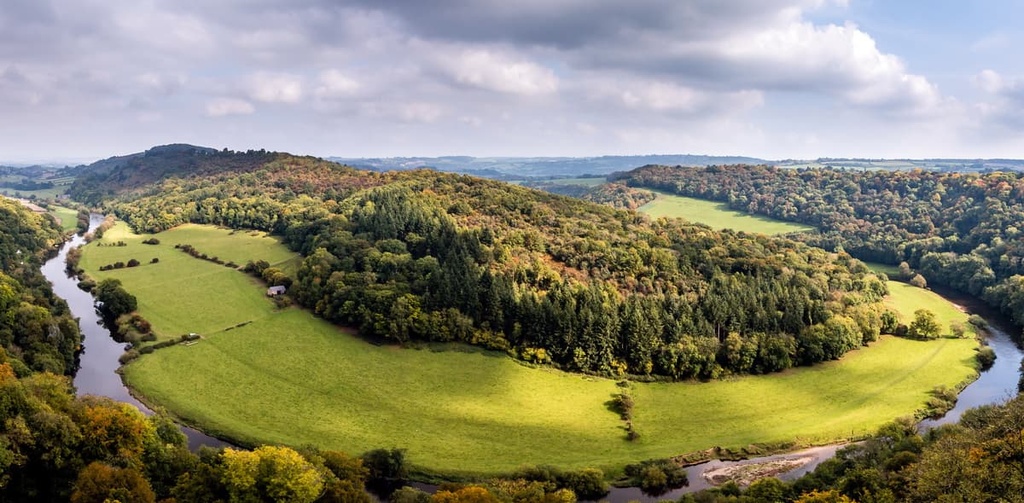
One popular walk to Symonds Yat Rock is from the Forest Holidays site near Christchurch to Symonds Yat Rock. This linear 2 mi (3 km) walk leads through the Forest of Dean up to Symonds Yat Rock. The walk is well-marked, flat, and popular year-round.
Alternatively, check out the Mailscot Wood circular path if you're searching for a more strenuous route. The circular walk is approximately 4.5 mi (7 km) long, and it leads up and down the cliffs along the River Wye. The extra effort is worth it, as many of the views along the way are spectacular. Begin this walk from the Symonds Yat Rock car park by following the pink trail markers.
Along with the Devil's Pulpit and Symonds Yat Rock, the Eagle's Nest is considered one of the best cliff top viewpoints in the Wye Valley AONB.
The Eagle's Nest is the highest point on the Monmouthshire bank of the River Wye at 235 m (771 ft). It's considered the highlight of the Chepstow to Monmouth section of the Wye Valley Walk.
The lookout was built in 1823 by the Duke of Beaufort and has been described as one of the finest viewpoints in Britain. You can see seven counties on a clear day, with views stretching as far as the Cotswolds and the Severn bridges.
The most popular route to the Eagle's Nest is along the steep trail from Lower Wyndcliff car park. The footpath features 365 steps that were carved into solid rock in 1828. Today, approximately 300 of the steps remain. This trail is about 1.25 mi (2 km) long and is only suitable for hikers who are comfortable with heights.

Alternatively, hikers looking for a more leisurely trail can follow the path from the Upper Wyndcliff car park. The trail weaves through the ancient Wyndcliff Wood and runs steadily uphill.
Located just to the north of Tintern is Whitestone. This series of cliffs is home to several popular attractions, including Cleddon Falls, where Romantic poet William Wordsworth wrote "Lines Written a Few Miles above Tintern Abbey."
Whitestone is also home to the historic Cleddon Hall, where prominent Welsh philosopher Bertrand Russell was born in 1872. You'll also get to enjoy views from the popular Duchess Ride viewpoint.
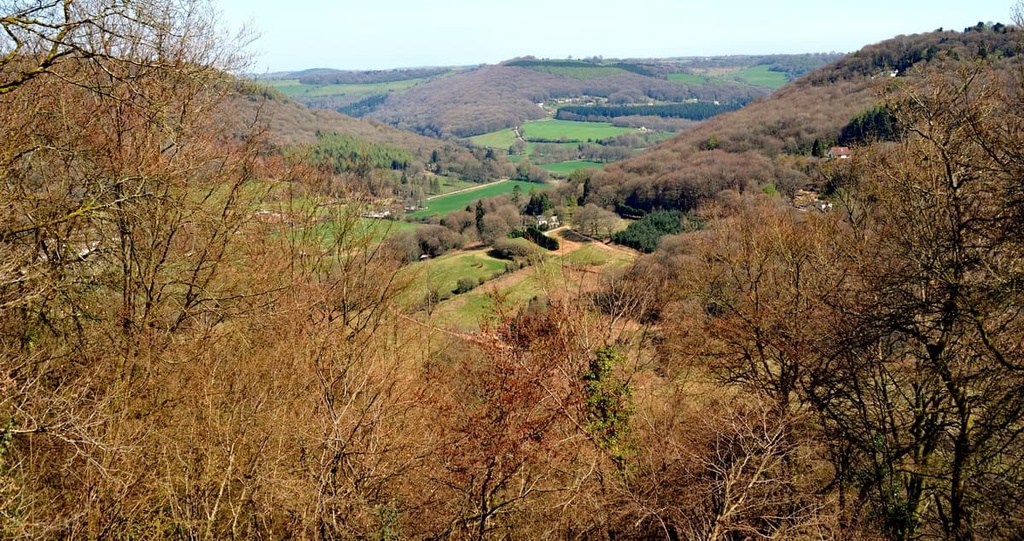
The best way to experience Whitestone is along the 2 mi (3.2 km) circular trail from Whitestone car park. The trail leads through Douglas fir woodlands and offers picturesque views of the village of Llandogo.
Beacon Hill (311m/1,020 ft), or Trellech Beacon, is the highest point in the Wye Valley AONB and eastern Monmouthshire. It's located less than a mile (1.6 km) to the east of the village of Trellech. Beacon Hill is situated very close to Whitestone, so the two areas are easy to explore on the same day.
The most popular trail on Beacon Hill is the red and white waymarked path from the Beacon View car park. This 2 mi (3.2 km) circular walk takes hikers past the trig pillar atop Beacon Hill, with views towards the Brecon Beacons, the Malvern Hills, and the Cotswolds.
A trip to the Anglo-Welsh border isn't complete without hiking along a section of the Offa's Dyke Path. This 177 mi (284 km) long distance trail runs from Sedbury Cliffs on the Severn Estuary in Gloucestershire to Prestatyn on the coastline of North Wales. It's one of 16 National Trails in England and Wales.
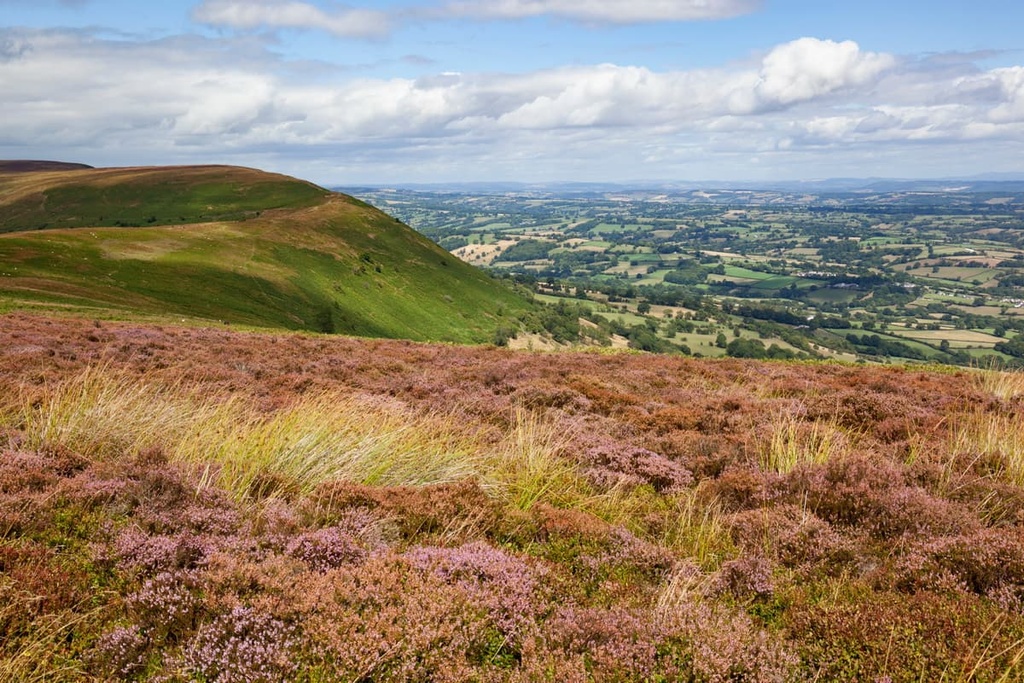
The trail is known as Offa's Dyke Path as it follows the ancient Offa's Dyke earthwork for around 70 mi (112 km). Built in the eighth century, Offa's Dyke runs along the border between Wales and England and is often compared to Hadrian’s Wall. The walking path runs through the whole of the Wye Valley AONB, with several shorter itineraries for hikers to undertake.
One of the most popular sections of the Offa's Dyke Path is the walk to the Devil's Pulpit. The Devil's Pulpit is a limestone rock that juts out of the cliffs overlooking the River Wye and affords hikers stunning views of the twelfth-century ruins of Tintern Abbey.
Legends state that the devil used the Devil's Pulpit to preach to the monks of Tintern Abbey to tempt them to abandon their faith. Views from the Devil's Pulpit inspired the title of the Wordsworth poem, "Lines Written a Few Miles above Tintern Abbey."
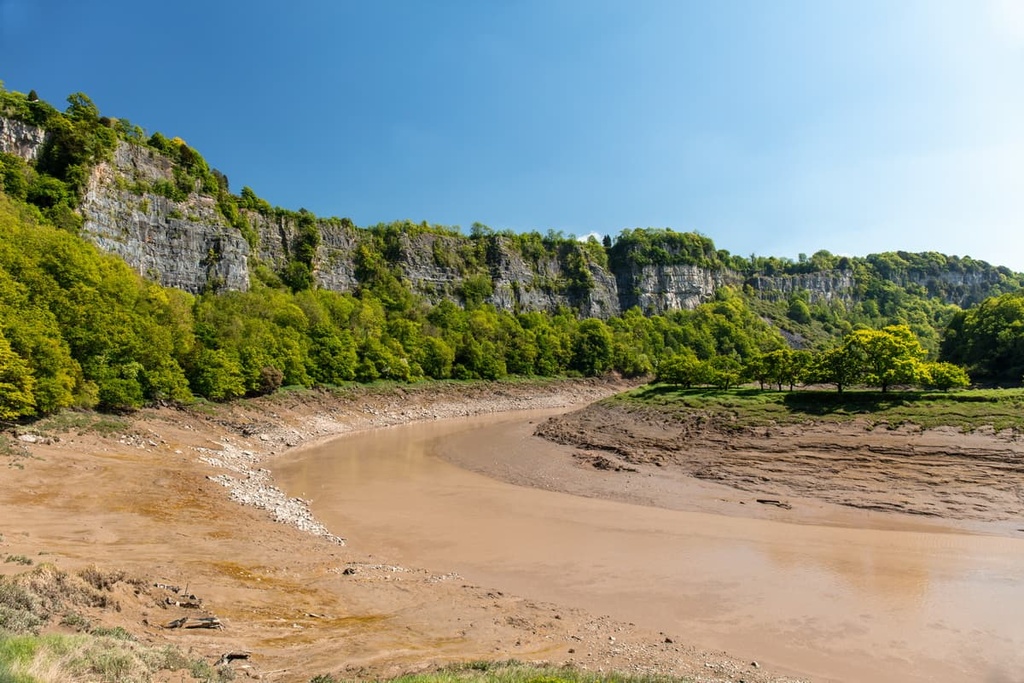
The best way to reach the Devil's Pulpit is on the linear 1.5 mi (2.4 km) trail from the Wireworks Bridge. You can park at the Wireworks car park. To walk is steep in places, and hiking boots are recommended.
Another worthwhile excursion along the Offa's Dyke Path is to Lancaut and Wintour's Leap. Lancaut is a nature reserve and peninsular formed by an oxbow in the River Wye. The river is encircled by cliffs, including the Wintour's Leap viewpoint.
Wintour's Leap is named after seventeenth-century Royalist Sir John Wintour. Legends state that Sir John Wintour leapt with his horse from Wintour's Leap to escape from the Roundheads. He survived the fall into the river below and reached safety at Chepstow Castle.
While historians believe Sir John Wintour used this method to escape Parliamentary forces twice, it's thought he jumped from two less dramatic spots.
One of the best hikes around Lancaut starts in Tidenham Chase, the largest remaining area of lowland heathlands in Gloucestershire. This circular walk is approximately 6 mi (10 km) in length. You can pick up the trail from the Tidenham Chase car park.
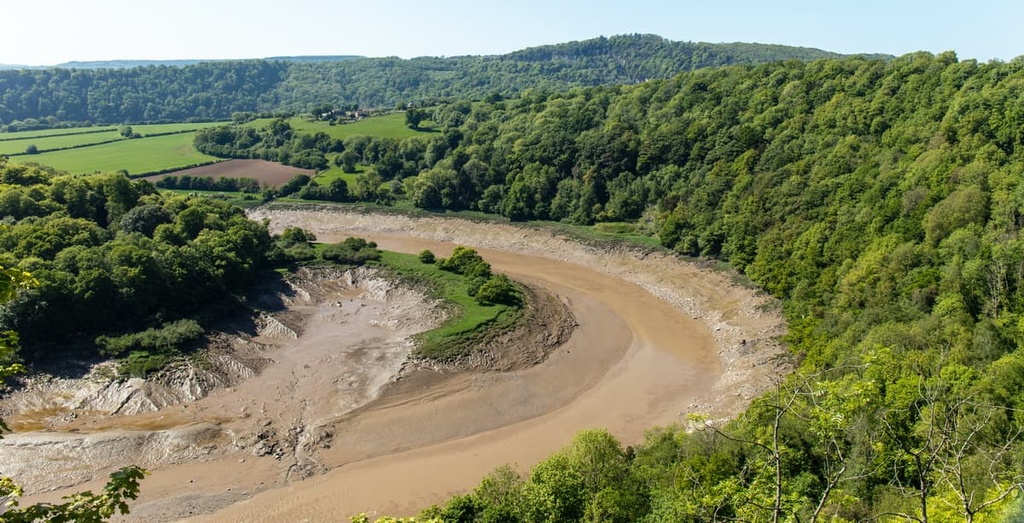
One of Britain's most popular vacation destinations for over two centuries, the Wye Valley AONB is home to some picture-perfect settlements. Read on to find out about the AONB's main cities, towns, and villages.
Located just 5 mi (8 km) to the northeast of the Wye Valley AONB is the cathedral city of Hereford. The largest settlement in Herefordshire by a considerable margin, Hereford is the ideal base for anyone looking to discover the best of the Anglo-Welsh border region.
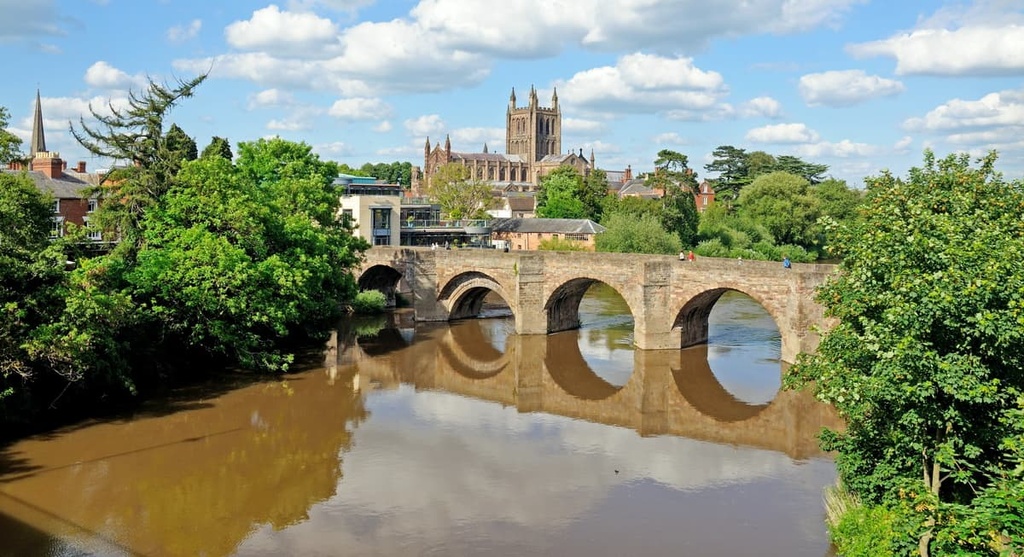
During your stay in Hereford, ensure you visit the eighth-century Hereford Cathedral and tour the Hereford Cider Museum. Popular hotels in Hereford include the Green Dragon Hotel and the Castle House Hotel.
The market town of Ross-on-Wye rests on the northern edge of the Forest of Dean. The birthplace of modern British tourism, Ross-on-Wye is conveniently located close to several major attractions, including the eleventh-century ruins of Goodrich Castle and Coppet Hill (211 m/692 ft).
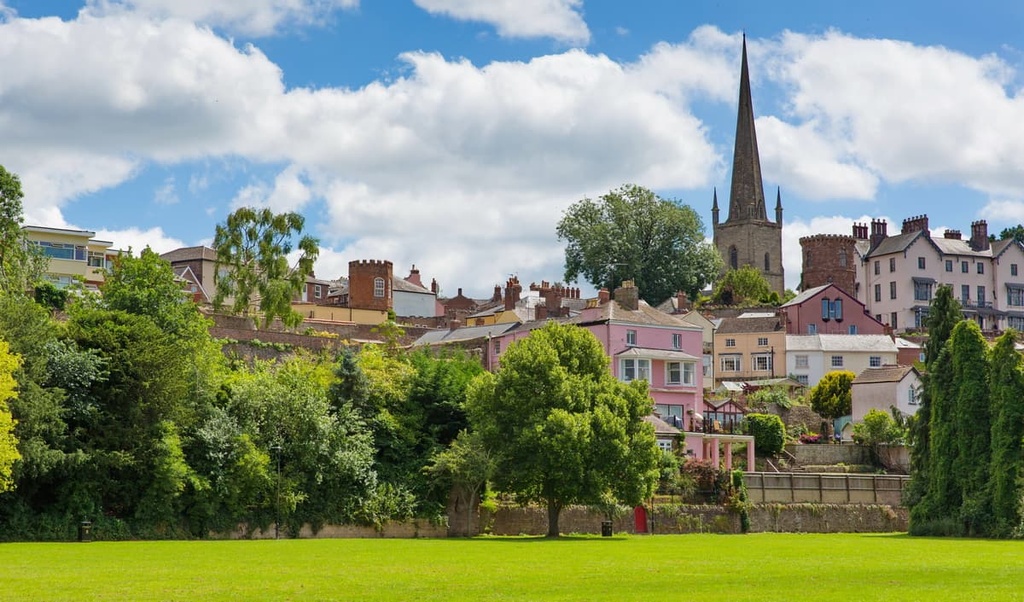
If you're looking for something to do around Ross-on-Wye, the Thomas Blake Memorial Garden is ideal for a family stroll. Popular hotels in Ross-on-Wye include the Kings Head Hotel and the Royal Hotel.
Sat at the confluence of the River Monnow and River Wye is the historic town of Monmouth. Originally the site of the small Roman fort of Blestium, Monmouth is now a sizable town home to several historical attractions like the tenth-century Norman Monmouth Castle and the medieval Monnow Bridge.
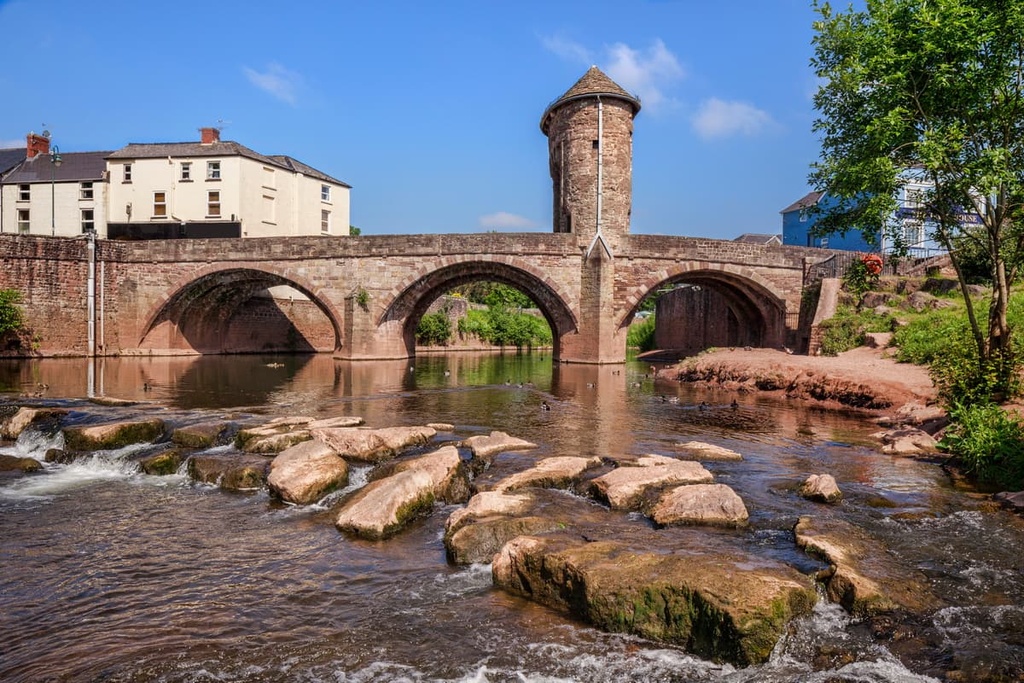
There are several popular hiking destinations near Monmouth, including the Kymin (243 m/800 ft), which provides sweeping views of the town. If you're planning to stay in Monmouth, book a room at the Riverside Hotel or the Queen's Inn.
Go hiking along the longest river in Britain when you visit Chepstow. Chepstow is another town located at the confluence of two rivers, the River Wye and the River Severn.
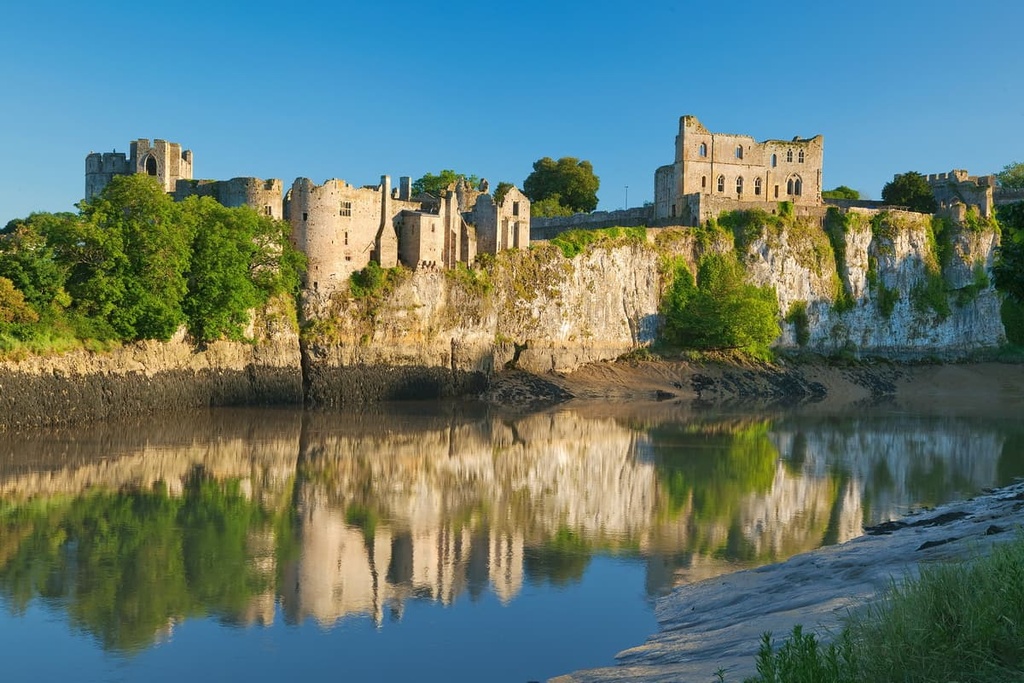
Chepstow is a gorgeous town, complete with the clifftop Chepstow Castle and the nineteenth-century Old Town Bridge. It also marks the start of the 136-mi (219 km) Wye Valley Walk. Popular hotels in Chepstow include Two Rivers Lodge and the Beaufort Hotel.
There are several postcard-worthy villages along the Wye, and the most iconic is arguably Symonds Yat. Split across the banks of the River Wye, Symonds Yat offers some of the best hiking options in the Lower Wye Valley, including Symonds Yat Rock.
Symonds Yat is also a favorite spot among water sports lovers. Consider taking a kayak out onto the River Wye and viewing the AONB as visitors would’ve done on the Wye Tour.
Other attractions in Symonds Yat include the Wye Valley Butterfly Zoo and the Amazing Hedge Puzzle, built to commemorate the Queen's Silver Jubilee. Popular hotels in Symonds Yat include the Saracens Head Inn and Ye Olde Ferry Inn.
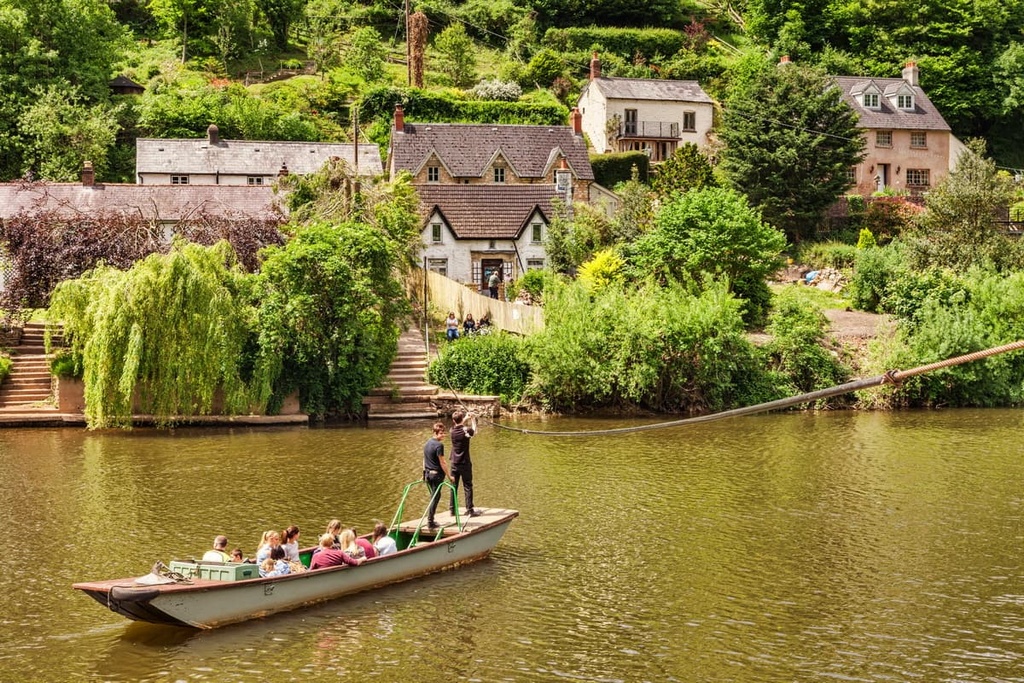
Explore Wye Valley AONB with the PeakVisor 3D Map and identify its summits.








